Julie Andrews Looks Back on 8 of Her Most Iconic Movie Costumes
I’ve always absorbed my characters from the outside in. Some were more challenging to take in than others. But in hindsight it’s been fascinating to realize how much I’ve been influenced by the costumes, hair, and makeup that’ve helped me come as close to my characters as possible.
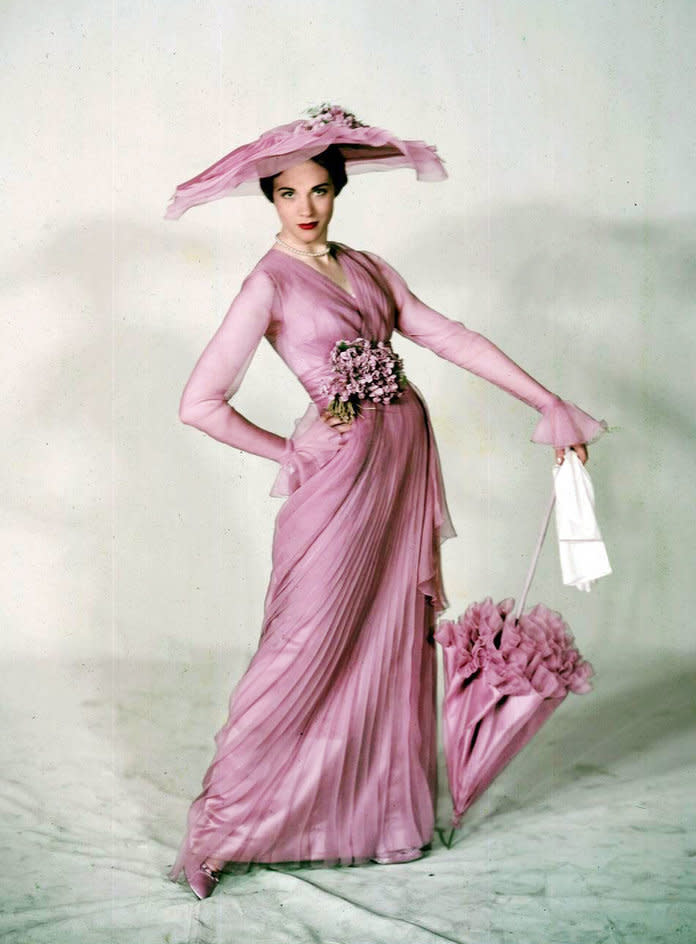
My Fair Lady (1956). Alamy
I got my start in the theater, and when I arrived on Broadway to play Eliza Doolittle in My Fair Lady, all the clothes were so much more detailed and beautifully made than I’d ever expected. The costumes were designed by the great Cecil Beaton, and though we had to make some adaptations, his knowledge of the period [the Edwardian era] was extraordinary. It wasn’t until I had Eliza’s shawl on my shoulders and her silly broken hat on my head that I knew how I was supposed to act.

Rogers and Hammerstein's Cinderella (1957). CBS
My first time on live television was in Rodgers and Hammerstein’s production of Cinderella, and I quickly learned you have a lot less time to embrace your costumes than in the theater. I did get to wear actual glass slippers, though. [laughs] It was all very hectic, especially when it came to Cinderella’s big transformation ahead of the ball. As I changed from rags to riches, the camera was traveling up my body while I was throwing my clothes on and flinging a different hairpiece on my head. I knew that if anything went wrong, I’d only have one shot.
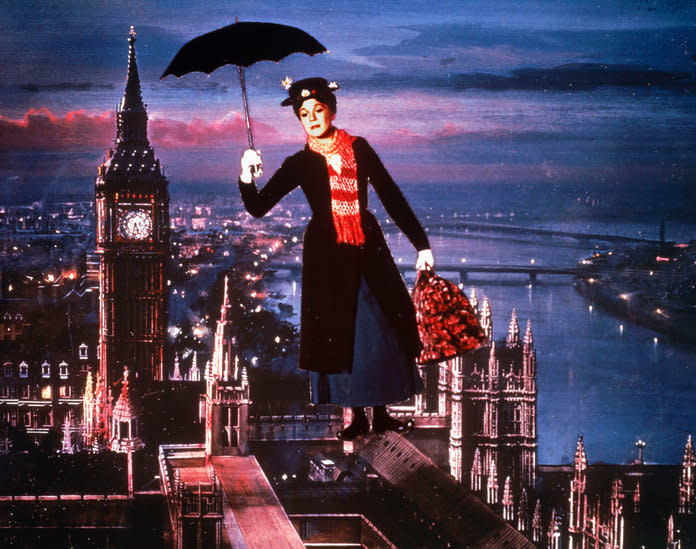
Mary Poppins (1964). Shutterstock
Soon after, I landed the role of Mary Poppins. When Walt Disney offered me the part of Mary, he also offered my then-husband [Tony Walton] the job designing the costumes and principal sets. I was so happy to have someone I could trust so completely next to me. Through the wardrobe, Tony gave me so much of the character. He said to me, “I like to think that Mary has a little bit of a secret life.” And so, whenever one of her very formal jackets was open or if her skirt kicked up, he wanted it to reveal a scarlet lining or a wonderful lemon-lime flash of silk or some other little thing that would turn her on. Her clothes gave me that extra magical spark I needed to become Mary Poppins. Though, to tell you the truth, her wigs were uncomfortable to wear. [laughs] The only piece of wardrobe I’ve ever asked for on a film was Mary’s shoes from the “Jolly Holiday” sequence. They were high lace-up boots in pink and white. I had them made into bookends.
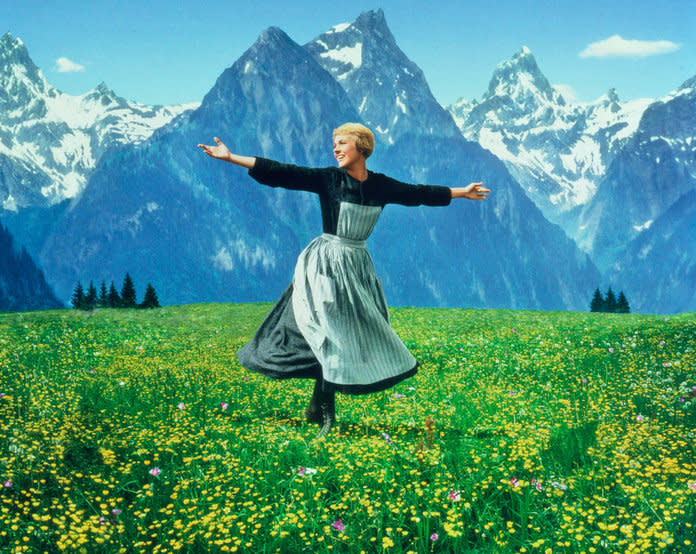
The Sounds of Music (1965). Alamy
So much of a character evolves through the look, and that was certainly the case with The Sound of Music, starting with my character Maria’s hair color, which was a happy accident, really. Before filming, they wanted to make my hair a little brighter, but something went wrong with the dye process. I looked horribly orange for a while. It was a disaster. Then they decided we should make it even lighter, which actually ended up working very well for her Austrian look. The good news was that when I was wearing the nun’s wimple, I didn’t have to worry about my hair. [laughs]
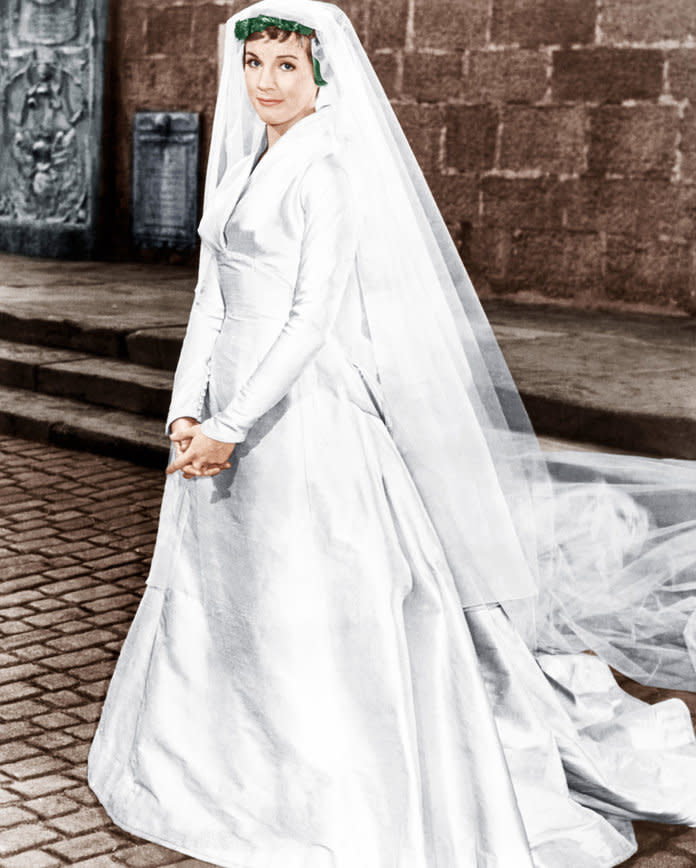
The Sound of Music (1965). 20th Century Fox/The Everett Collection
One of my favorite things in the film was the beautiful wedding dress I wore when Maria married the captain [played by Christopher Plummer]. When I first put it on, I was awestruck. Sure, I loved my own wedding gown, but this one was so beautifully constructed yet so understated. Exactly right for a woman who was at one time going to be a nun.
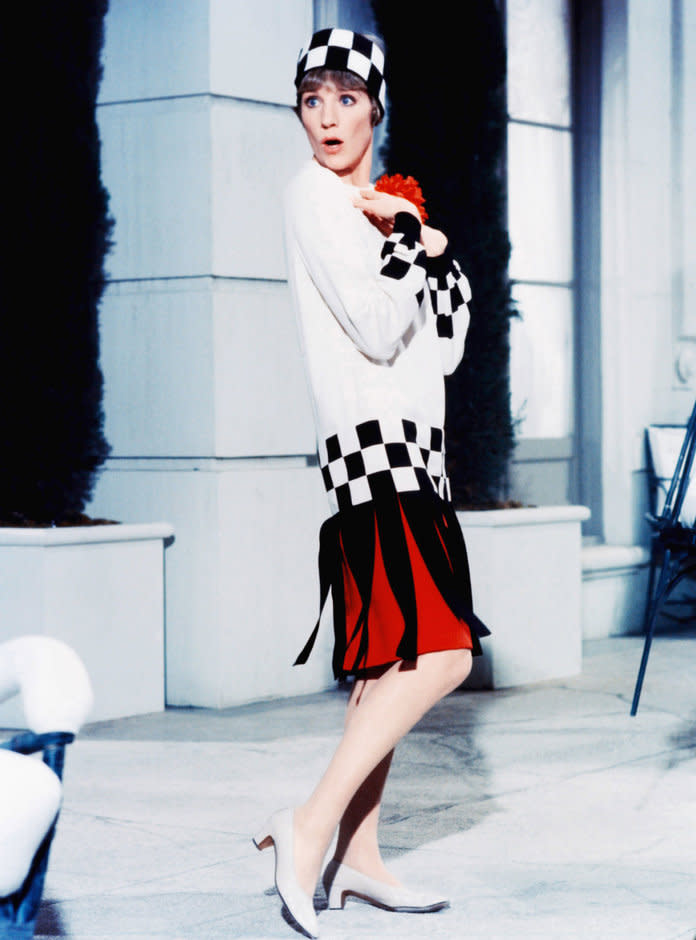
Thoroughly Modern Millie (1967). Everett Collection
Part of the fun of acting is getting to live in so many different decades. I love the simplicity of the ’20s, when Chanel and Givenchy and Dior came on the scene and changed everything. I adore that style, which is one of the reasons Thoroughly Modern Millie was such a charming movie to do costume-wise. But if I had to pick which of my characters had the best sense of style, I’d say Gertrude Lawrence in Star! The film had the greatest range of fashion because it spanned so many decades. There were more than 96 costumes, which required at least three fittings each.
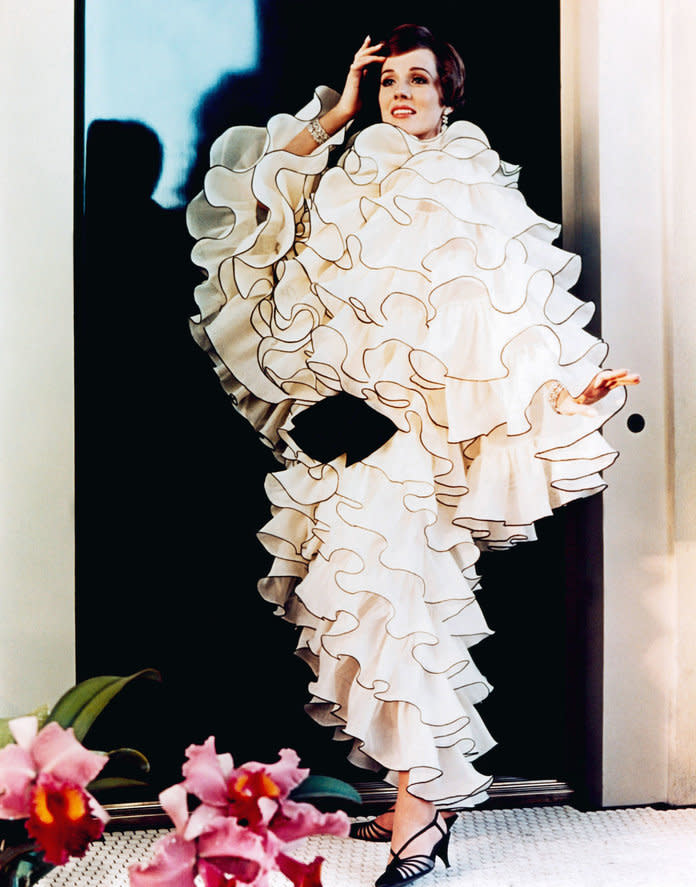
Star! (1968). 20th Century Fox/The Everett Collection
Gertrude drove around in a Rolls-Royce, and she loved beautiful things, especially jewelry. The pieces in the film were supplied by Cartier, and I wore up to $2 million a day. If I could only wear one costume from my career again, it would be the cape from Star! It was quite literally nothing but frills from top to bottom, edged in black piping. It only appears in a small montage in the film, but it managed to capture everything that I love most about high couture.
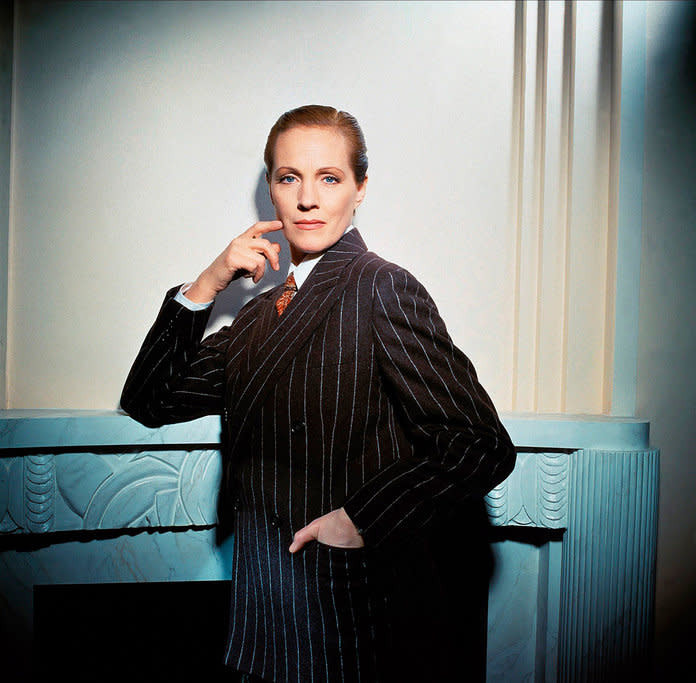
Victor/Victoria (1982). Alamy
Of all my roles, though, I consider the one in Victor/Victoria among my most complicated. There were times when I was playing straight female or pretending to be a straight male. But then there were also times when I was playing male but thinking female, so it was all a little like rubbing my tummy and patting my head, if you know what I mean. I started to watch every man who crossed my path to pick up some clues on their mannerisms and how to behave. I found the layers of men’s clothing claustrophobic. After years of wearing crinolines and petticoats, I was certainly surprised how constricting a starched collar and a dickey could be.
As told to Jennifer Ferrise.
Andrews’s book Home Work: A Memoir of My Hollywood Years is out on Oct. 15. For more stories like this, pick up the November issue of InStyle, available on newsstands, on Amazon, and for digital download Oct. 18.

